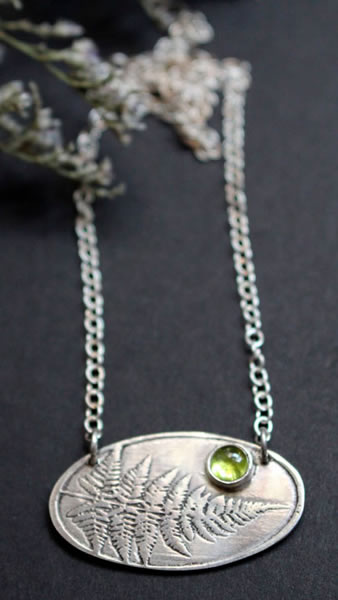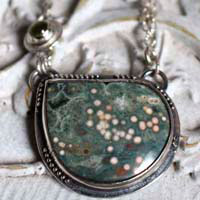- Jewelry
- Inspiration
- Our imagination
- Birthstones
- Celebrating with Eternal Flowers
- Druids and druidesses
- Flower meanings
- History, archeology jewelry
- History and healing properties of metals
- History and healing properties of stone
- Illumination jewelry
- Japanese symbols
- Maya calendar jewelry
- Stone color symbolism
- Stones catalogue
- Wedding anniversaries
- Searches a theme on the site
- Good Deals
- Paintings
- About
- Contact
JEWELRY
- Anklet
- Bracelets
- Brooches
- Cufflinks
- Earrings
- Pendants & Necklaces
- Rings
- Draw your jewelry
- How to clean your jewel
- Metal we used
INSPIRATION
- Our imagination
- Birthstones
- Celebrating with Eternal Flowers
- Druids and druidesses
- Flower meanings
- History, archeology jewelry
- History and healing properties of metals
- History and healing properties stones
- Illumination jewelry
- Japanese symbols
- Maya calendar jewelry
- Stone color symbolism
- Stones Catalogue
- Wedding anniversaries
- Searches a theme on the site

Peridot: history, healing properties and lithotherapy
Peridot properties

The name peridot originates from the Arabic word faridat, which literally translates to "precious stone," and from olivine, derived from the Latin olivus, referring to its characteristic olive-green hue. It belongs to the silicate family and more specifically to the nesosilicate group, where it is classified as a gem variety of olivine.
Composed primarily of magnesium (Mg₂SiO₄) and iron (Fe₂SiO₄), peridot owes its green color to the variable proportion of iron it contains, as well as the possible presence of trace elements such as nickel or chromium. Unlike other gemstones, its color is intrinsic to its chemical composition and does not result from impurities. This explains why peridot only occurs in shades of green, ranging from yellowish-green to deep olive-green.
Peridot is often mistaken for emerald due to their similar color, but it differs in both chemical composition and crystal structure. It has a vitreous luster and remarkable transparency that intensifies under artificial light, earning it evocative nicknames such as "the evening emerald" or "the poor man’s emerald." The terms chrysolite and olivine are sometimes used to refer to this gemstone, though chrysolite historically designated various yellowish or greenish stones in antiquity.
Peridots form under specific geological conditions, mainly in ultramafic igneous rocks such as peridotites and basalts. They are also found in the nodules of certain volcanic lavas, particularly in Hawaii, where peridot crystals sometimes break free from lava flows, creating green sand beaches.
One fascinating characteristic of peridot is its occasional extraterrestrial origin. Certain meteorites, known as pallasites, contain well-crystallized peridot inclusions, making it one of the few gemstones with both terrestrial and cosmic provenance. These meteorite peridots are extremely rare and highly sought after by collectors.
High-quality specimens exceeding 8 carats are particularly prized in jewelry and private collections. Among the most famous peridots, the American Museum of Natural History in New York and the Field Museum in Chicago exhibit exceptional specimens. The Smithsonian Institution in Washington, D.C., houses a rare 310-carat peridot, showcasing the beauty and rarity of this precious gemstone.
Peridot has a hardness of 6.5 to 7 on the Mohs scale, making it relatively resistant to scratches, though more fragile than gemstones like sapphire or diamond. This moderate hardness means that peridot can be used in jewelry, but requires some care, particularly for rings and bracelets, which are more exposed to impacts than pendants or earrings.
History, legends and beliefs about peridot
Peridot, nicknamed the "stone of the sun" by the ancient Egyptians, has always been surrounded by a mystical aura. Used in the adornments of ancient Greece and nomadic tribes, it symbolized light, vitality, and inner strength. This association with light and the divine explains why peridot was often used in religious and royal ornaments.
Peridot gained popularity around 1500 BCE, when the Egyptians began mining it on Zabargad Island (now Saint John’s Island), located in the Red Sea, approximately 80 km off the Egyptian coast. The pharaohs considered this gemstone sacred, and its extraction was strictly controlled: the mines were heavily guarded, and any intruder faced execution.
Traditionally, peridot mining was carried out at night, as it was believed that its glow was easier to detect under the light of torches and the moon. Miners would mark the locations of the stones before retrieving them at dawn.
A legend suggests that Cleopatra, a great admirer of gemstones, owned a collection of jewels adorned with emeralds, which were later discovered to be peridots. This confusion between peridot and emerald was common throughout history due to peridot’s vivid green hue and the difficulty in distinguishing the two before the advent of modern gemology.
During the reign of the Ottoman sultans, from the 14th century to the early 20th century, the largest known collection of peridots was assembled. These rulers highly valued the stone, associating it with divine protection and power. Many Ottoman jewelry pieces, now exhibited at Topkapi Palace in Istanbul, feature stunning peridots set in finely crafted gold.

After the Crusades, peridots were introduced to Europe by the returning crusaders, who brought them back from the Holy Land. They were widely used in religious decoration, especially to adorn churches and sacred treasures. A famous example is the large peridot in the Shrine of the Three Kings in Cologne Cathedral, which was long mistaken for an emerald.
The Hawaiians believed peridot to be the sacred tears of the goddess Pele, the deity of volcanoes and fire. According to legend, these precious gems were shed in anger or sorrow during volcanic eruptions, reinforcing the idea that peridot had a deep connection to the elemental forces of nature.
In the Bible, peridot is mentioned among the twelve stones adorning the breastplate of the high priest Aaron, symbolizing the twelve tribes of Israel. It is also cited as one of the precious stones decorating the twelve gates of the Heavenly Jerusalem in the Book of Revelation, where it represents purity and divine protection.
In popular belief, peridot was thought to ward off "night terrors" and protect its wearer from negative influences. According to an ancient tradition, mounting peridot in gold was said to enhance its protective powers. Another belief held that wearing a peridot bracelet on the left wrist, strung on donkey hair, would repel malevolent spirits—a superstition rooted in ancient protective rites.
Beyond its significance in antiquity and the Middle Ages, peridot continued to captivate royal families and collectors of rare gems. The Russian Imperial Crown features exceptional peridots, and some of the largest specimens have been used in British monarchy jewelry.
Today, peridot is recognized as the birthstone for August and remains a highly prized gemstone in fine jewelry.
Mines: Brazil, Afghanistan, Canary Islands, Pakistan, Sri Lanka, USA, and Russia.
Healing properties and benefits of the peridot
Throughout the long history of humanity, various civilizations have attributed to peridot a range of properties, virtues, and interpretations of a curative or symbolic nature. The elements presented here follow a cultural, historical, and descriptive approach, intended to illustrate the particular relationship that gradually developed between this green stone and human societies over the centuries. As with the previous examples, this information is part of a scientific and historical perspective. It does not constitute any therapeutic or medical recommendation and does not reflect personal beliefs.
- In many ancient traditions, peridot was perceived as a stone associated with symbolic protection against influences considered negative. It was sometimes described as a safeguard against intrusive thoughts, heavy emotions, or certain external influences regarded as harmful. This interpretation was extended to notions such as jealousy, resentment, or bitterness, viewed as emotional states capable of disturbing inner balance.
- Peridot has also been associated with the release of emotional blockages. In certain traditional interpretations, it was described as a symbolic support during periods of doubt, anxiety, or melancholy, helping individuals move through these states by encouraging a sense of emotional lightness and inner clarity.
- On a psychological and symbolic level, peridot is often mentioned in connection with self-confidence and self-esteem. Its green color, traditionally associated with growth and renewal, contributed to the idea that it could encourage a more positive outlook, foster optimism, and symbolically accompany processes of personal rebuilding and decision-making.
- In the same continuity, peridot has been interpreted as a stone encouraging letting go. It is sometimes mentioned in cultural contexts where the aim was to soothe stress, release deep emotional tensions, and establish a more serene inner climate, conducive to balance and stability.
- From a symbolic bodily perspective, certain traditions associated peridot with processes of purification. It was thus mentioned in connection with the elimination of toxins and the proper functioning of the digestive system. In these interpretations, it could symbolically accompany gastric discomforts such as colic, digestive unease, or imbalances related to the stomach, without ever replacing a medical approach.
- Peridot has also been linked, in some traditional readings, to the activity of the liver, pancreas, and spleen. It was then perceived as a symbolic object associated with the regulation of sugars and fats, echoing the metabolic functions of these organs. This symbolism sometimes led to its mention in contexts related to metabolic imbalances or issues of bodily overload.
- Regarding the circulatory system, peridot is sometimes cited for its association with fluidity and vitality. In certain traditions, it was linked to a more harmonious symbolic circulation of internal flows, blood oxygenation, and cardiovascular balance, notions often connected to the color green and the idea of harmonious movement.
- Peridot has also been mentioned in traditional uses related to eye fatigue. It was sometimes described as a symbolic support accompanying visual discomforts, such as eye strain or certain forms of ocular unease, due to its luminous brilliance and a color considered soothing to the eyes.
- In some cultural contexts, peridot has been associated with motherhood and life cycles. It was occasionally cited as a symbolic companion stone during childbirth, perceived as supporting a smoother progression of contractions and helping to ease the emotional tensions of the expectant mother.
- Peridot is also mentioned as a companion stone in processes of symbolic detoxification. It has thus been referred to in contexts aiming to break free from certain dependencies, particularly related to alcohol or tobacco, by symbolically supporting willpower, mental clarity, and the ability to break deeply rooted habits.
- Finally, in some more recent traditions, peridot has been cited as a symbolic accompaniment in the context of chronic illnesses or severe disorders, such as certain serious digestive conditions or long-term pathologies. In these cases, it was perceived not as a remedy, but as a symbolic support fostering morale, resilience, and the capacity to endure complex physical and emotional challenges.
 Please note that all healing properties attributed to stones come from ancient traditions and various cultural sources. This information is provided for informational purposes only and does not constitute medical advice. In case of any health concerns, it is recommended to consult a qualified professional.
Please note that all healing properties attributed to stones come from ancient traditions and various cultural sources. This information is provided for informational purposes only and does not constitute medical advice. In case of any health concerns, it is recommended to consult a qualified professional.
Peridot jewelry samples
To learn more about litotherapy, we recommend you the following books:



























